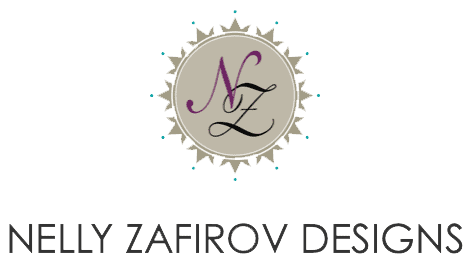Interior design for well-being
Soothing Stress through Interior Design
We all have felt it at some stages of our lives for shorter or even longer periods of time. Demands of relationships, work or the environment can become overwhelmingly stressful. Mental symptoms, such as nervousness, tenseness, crankiness and panicking, can soon merge with feeling physical pain, lack of concentration and sleep problems. It’s like a snowball that rolls and gets bigger and bigger. We even “infect” others with our nervousness, because stress is “contagious”, so observing someone who is stressed, makes us feel the same too (empathic stress).
It’s a normal reaction to seek out the comfort and security of our home when we feel overwhelmed with stress.
Personalised, goal-orientated design
can make a space a healthier place to be,
because what we see and feel
affects our emotions and thoughts, and thus our well-being and health.
We all desire and deserve a home that feels safe like a stronghold. This need is especially acute when our turbulent lives confront us with stressful situations.

Stylish and comfortable living room harmoniously integrating a variety of furnishing pieces and unique artworks. Curved and straight shapes, matt and polished finishings, rough and silky textures are masterfully balanced. The splashes of royal blue and fuchsia in the middle of serene whites have a pleasant awakening effect. Interior design by Stéphanie Coutas. Photo credit: @stéphaniecoutas.
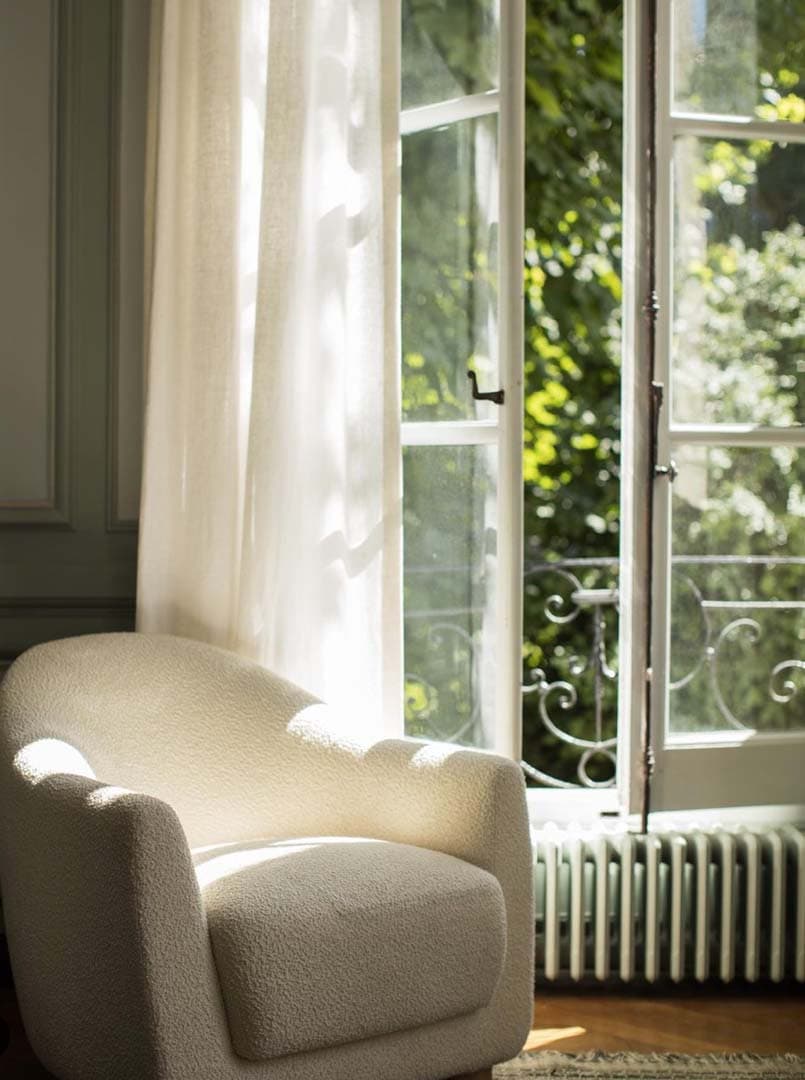
Privacy
Being alone is an effective and natural way to restore an exhausted nervous system. We can truly relax when we are in our very own private territory, don’t feel observed by others and know that we won’t be suddenly disturbed at any time. If someone is in our room, it is because we wish it to be so. Having our own private space is a fundamental human need that can be observed as early as in three-year-old toddlers.
A room of my own is what we need when we can’t bear the stress anymore. Interior design by Charles Zana. Photo credit: @charles_zana.
Maximising the use of the floor plan
Your bedroom and study, particularly if you work from home, are better to be located away from the shared spaces. It would be ideal if their windows face East and/or East-South so you can catch the full of life morning sunshine.
Layout: positioning some pieces of furniture right
We humans still have a deeply innate mental trait, called prospect and refuge, originating from our prehistorical ancestors. Imagine their home, a cave positioned in a way that they can’t be easily seen but can overlook and control their surroundings. This ancient configuration gives humans a feeling of security, and it is just as relevant in contemporary homes.
To have prospect and refuge means to feel a solid wall behind your back when you are sitting or behind your head when you are lying. Your place is as distant as possible from the door, and at the same time, it allows you to monitor it. The door opens towards the room, so the person in the room is not immediately exposed but has time to prepare themselves while the door opens.
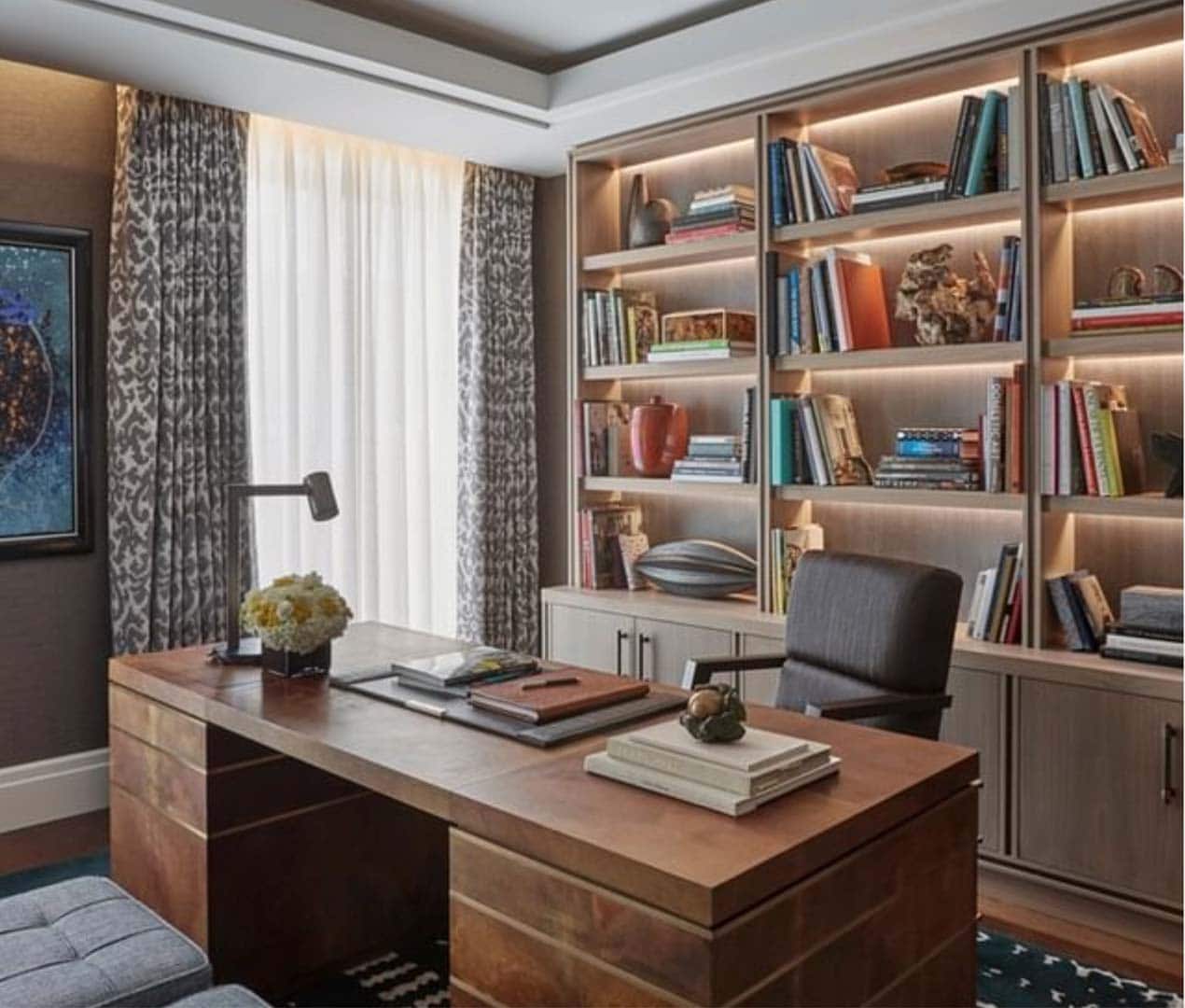
Feeling the support of the bookcase behind our back has a comforting mental effect of security. Interior design by Helen Green Design Studio. Photo credit: @hgdstudio.
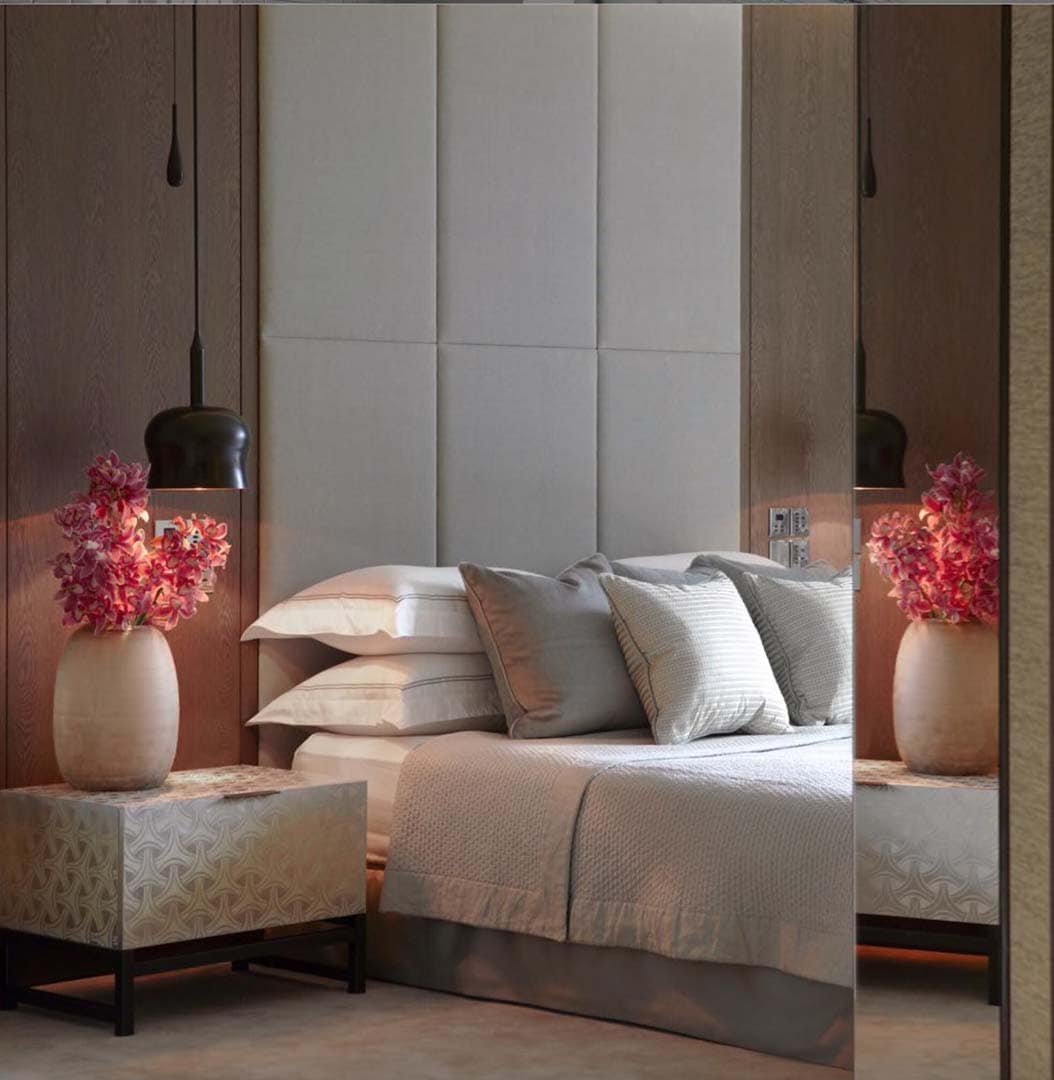
This accentuated headboard gives a feeling of stability and protection, which has a calming mental effect. Interior design by Helen Green Design Studio. Photo credit: @hgdstudio.
Orderliness and visual complexity
To calm down, our stressed mind needs rest, order… and beauty. Seeing and feeling aesthetically pleasant surroundings, boosts our mood, positive thinking and well-being.
We feel more relaxed in ordered, uncluttered interiors. External order means having order in our thoughts and the ability to set the right priorities. Research shows that, in general, spaces with moderate visual complexity, i.e., not too many colours, patterns, objects, are perceived as calming compared to overloaded ones.
In this functional kitchen, order and aesthetics appear as a natural consequence of good planning. Kitchen design by Neptune. Photo credit: @neptunehomeofficial.

Symmetry
Since ancient times symmetry is perceived across the cultures and ages as a sublime form of orderliness and aesthetic beauty. Symmetrical arrangements at home on small or larger scales have a pleasant, relaxing impact on humans.

In these two images, we see symmetrical interior compositions on grand and small scales. The strong shapes and contrast colours in this Paris Saint Sulpice property are softened through harmonious symmetrical order. Interior design by Jean-Louis Deniot. Photo credit: www.deniot.com (1st picture). A master of symmetry, William R. Eubanks never leaves himself a possibility to insert symmetry in his richly layered interiors and in this way emphasise the beauty of each and every feature (2nd picture). Photo credit: @williamreubanks.
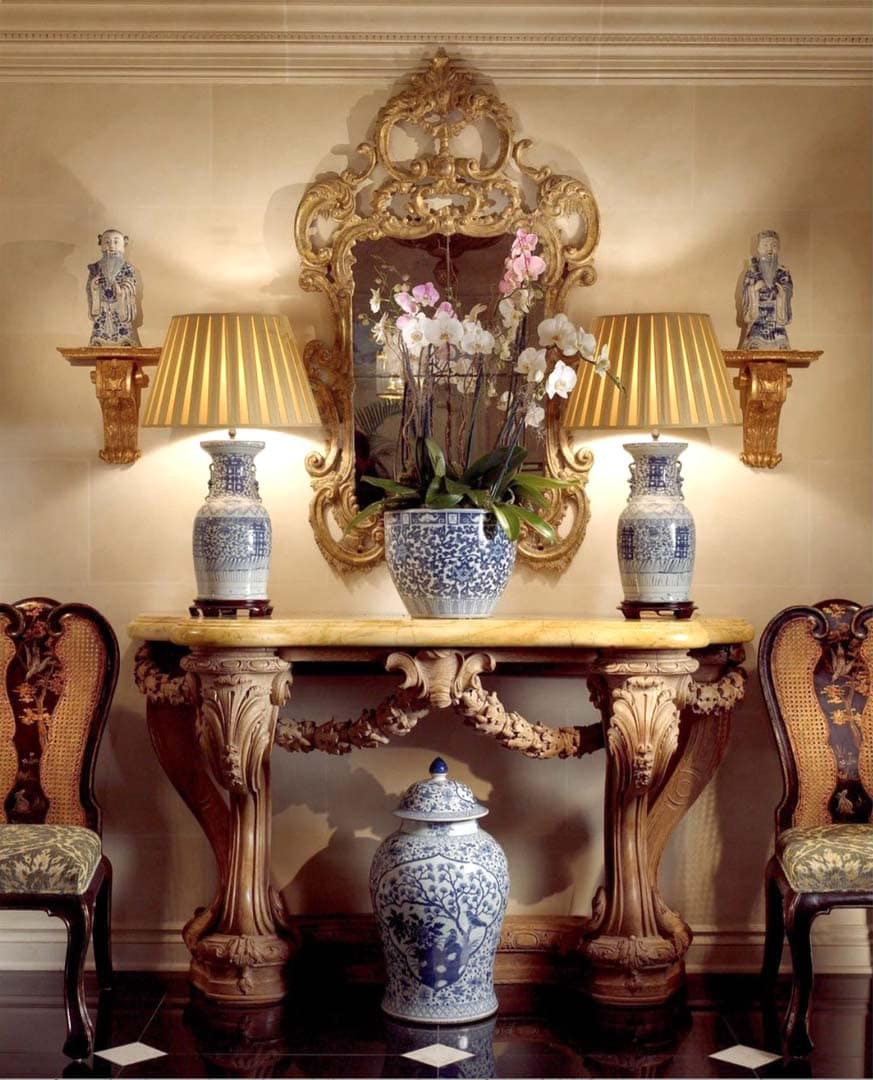
Colours, patterns, textures & Co
The preference for minimalist or richly layered interiors is highly individual and depends, among other things, on cultural traditions, personal taste and experiences. Whatever style we choose, it is important that it is not influenced by fashion trends or other external factors but corresponds to our personality and is really the style in which we want to live. This is because, our interior surroundings can have a harmful, neutral or thriving effect on us.
Only an interior that is in unison with our identity,
i.e. projects our personality at that very moment
but also the personality who we want to be,
is supportive and positively stimulating.
In recent decades, two clear interior design trends have become pronounced: depersonalised, hotel-like neutral style and, in contrast, a style boasting the extreme anarchy of bold colours and patterns. It seems as though anonymity and alienation, especially in the business world, have imposed fear of colour and self-expression. With the opening of society to authenticity and diversity, which we are witnessing, people embrace their subjective way to live out their true selves, including making design choices for their homes that may not be in vogue but are personally sublimely pleasant.

Bright colours and soft, smooth textures have a soothing, relaxing effect. In addition, as one of the warmest colours, orange emphasises the coziness of this bedroom. Bed-scape by Helen Green Design Studio. Photo credit: @hgdstudio.
Light
It is essential for our physical and mental health to keep our circadian rhythm in sync with the solar rhythm of our geographical location on the planet, i.e. our wake & sleep cycle overlaps our exposure to light and darkness. Mismatched light can disturb our natural body clock. As a consequence, a disturbed body clock leads to stress and depression. Therefore experiencing the following natural flow of light is a vital law:
- Daylight and sunshine fill every room during the day;
- The transition from daylight to artificial evening light indoors flows seamlessly and in synchronicity with the changing the intensity of the natural light outside;
- Natural and/or artificial light, including the blue light emitted from electronic devices, are completely blocked during the night.
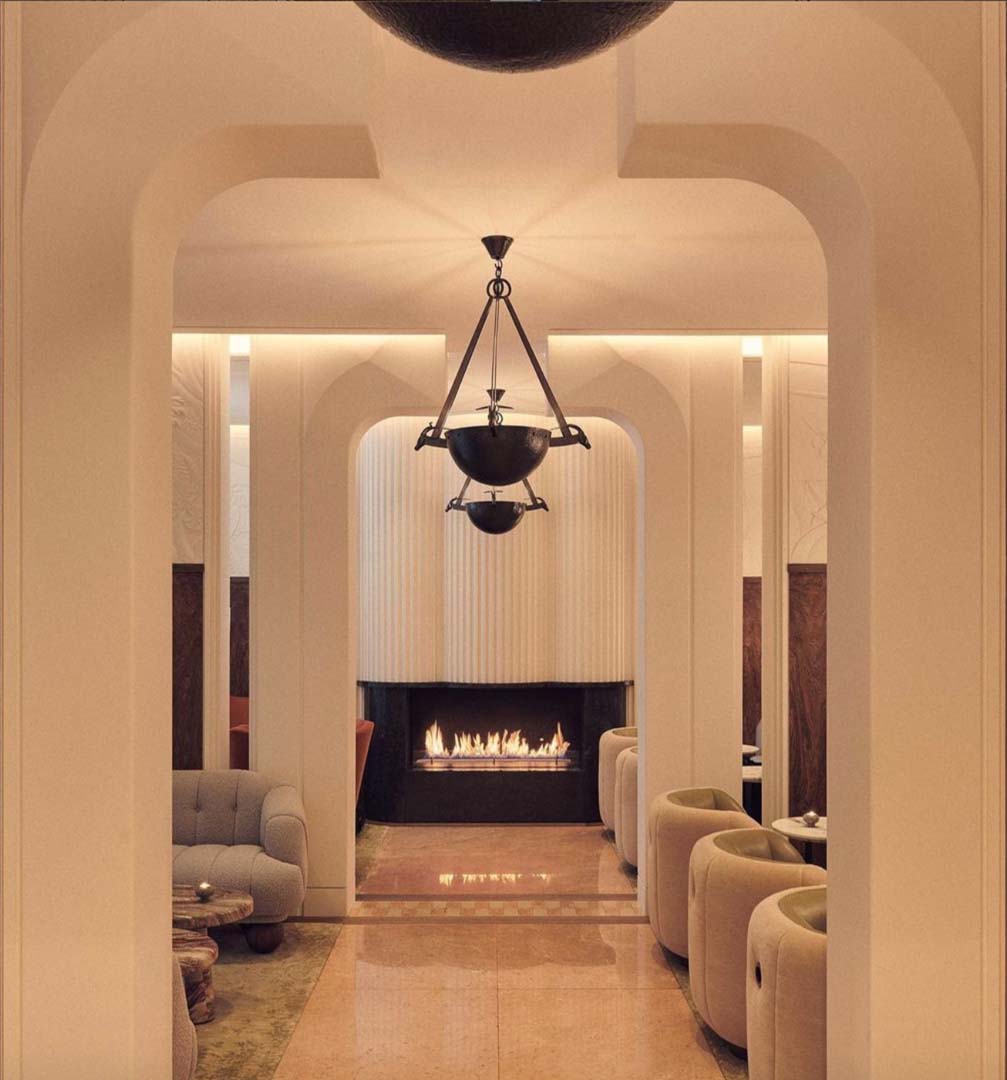
Tender ambient lighting at The Berkeley, London. Interior design by Bosstudio.
Photo credit: @bosstudio.
The restorative role of nature, flowers and wood
In our thousands of years of evolutionary development, we humans have been strongly connected to nature. Therefore the presence of nature in all its forms such as a window view, plants and flowers, green colour, artworks with images of the natural world, architecture and interior wood components has an indispensable and beneficial effect on people’s psyche. A bouquet of flowers makes us feel happy every time we see it; green leafy interior plants reduce stress; a window view of mountains, garden, trees or flowers is always pleasant; humans perceive green colour as relaxing; even scenes of nature in artworks can lift our spirit. The uniquely cosy atmosphere of a chalet is mainly due to the generous use of wood in the architecture and furnishings.

The arbiter of aesthetics, Alex Papachristidis says: “… few things can lift the spirit like a bouquet of flowers.” Photo credit: @everydayelegancecollection.
Pictures of nature: inside and outside. Interior Design by Charles Zana. Photo credit: @charles_zana.
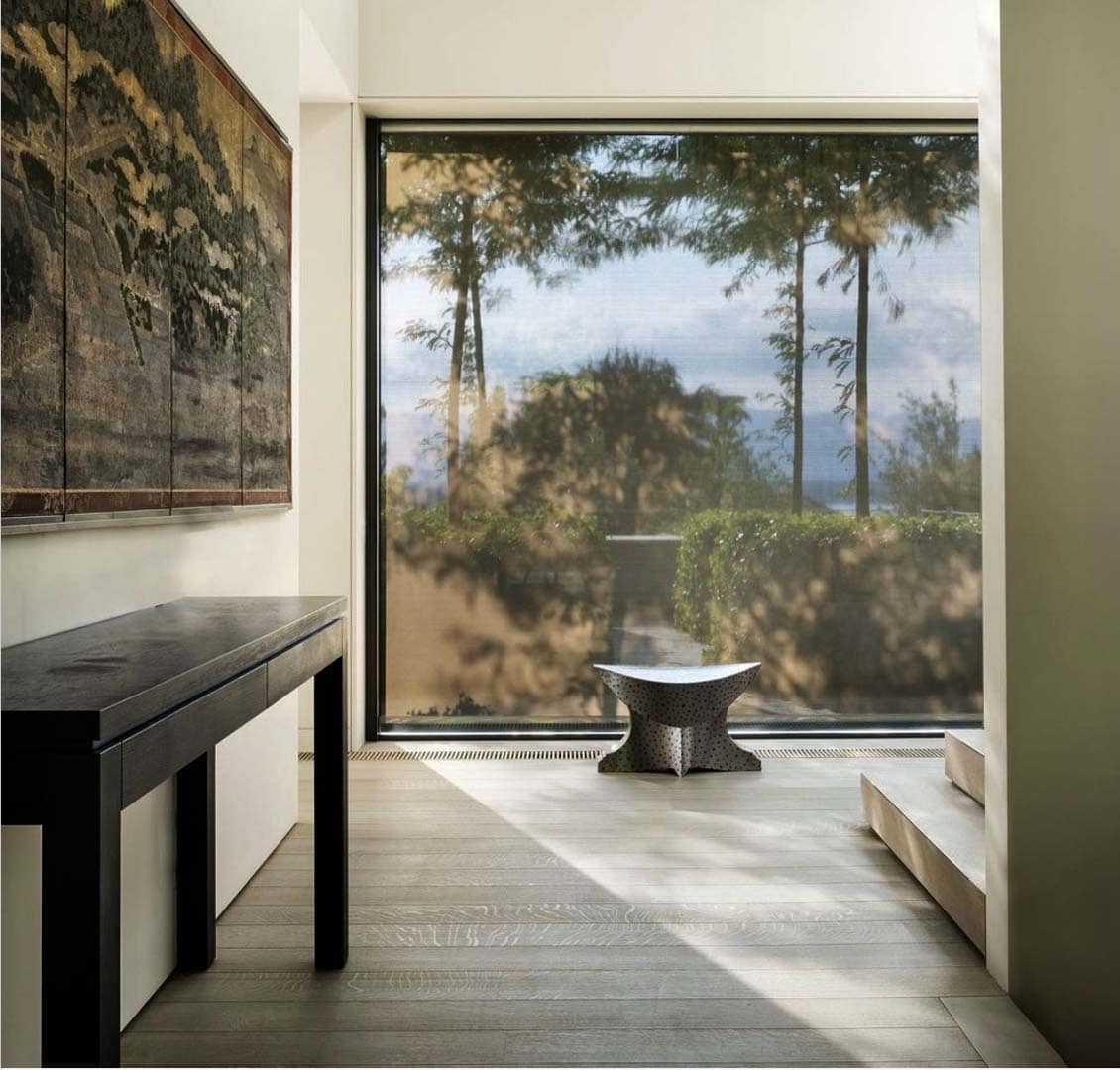
Scents
Scientific research proves that adding lemon, mango or lavender scents to a room can reduce stress. The smell of jasmine is said to contribute to a quality night sleep.
Music & sounds
The natural sounds of singing birds, gently rustling leaves, or a babbling brook have a tranquillising effect that aids our recovery from stress. So if you live near a park, а forest or have a garden, do go outside for a walk or open the windows at every opportunity to enjoy these wonderful sounds from nature.
Favourite music that’s light and not emotionally engaging with (sad) memories can release stress and tension and have a pleasant relaxing effect. “Binaural beats in the alpha frequencies (8 to 13 Hz) are thought to encourage relaxation and promote positivity”, according to some researchers.
Parks and gardens as well as the sound of running water have a restorative influence on people’s psyche. Photo credit: @stephensillsassociates.

